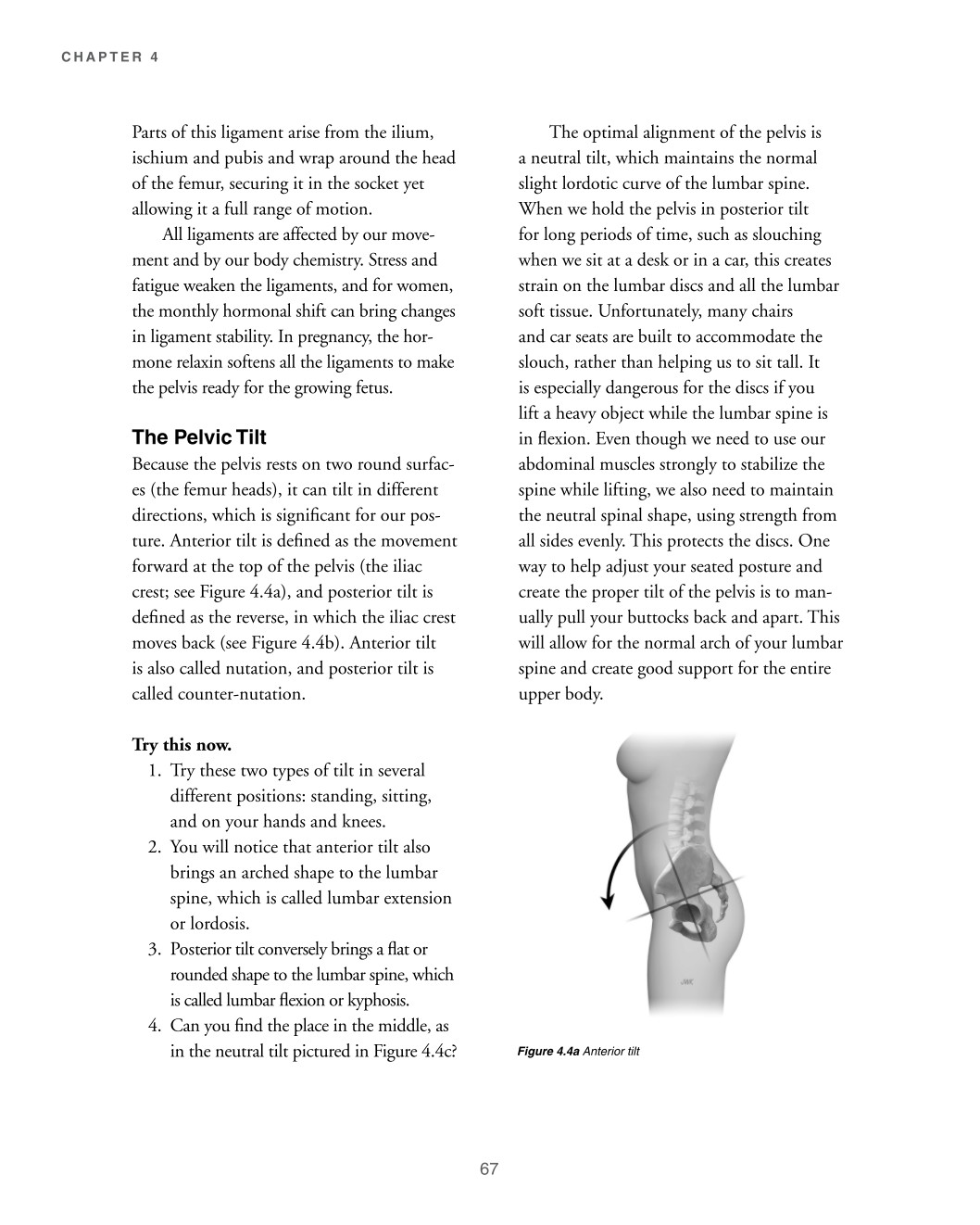

CHAPTER 4
Parts of this ligament arise from the ilium, ischium and pubis and wrap around the head of the femur, securing it in the socket yet allowing it a full range of motion. All ligaments are affected by our move- ment and by our body chemistry. Stress and fatigue weaken the ligaments, and for women, the monthly hormonal shift can bring changes in ligament stability. In pregnancy, the hor- mone relaxin softens all the ligaments to make the pelvis ready for the growing fetus. The Pelvic Tilt Because the pelvis rests on two round surfac- es (the femur heads), it can tilt in different directions, which is significant for our pos- ture. Anterior tilt is defined as the movement forward at the top of the pelvis (the iliac crest; see Figure 4.4a), and posterior tilt is defined as the reverse, in which the iliac crest moves back (see Figure 4.4b). Anterior tilt is also called nutation, and posterior tilt is called counter-nutation. Try this now. 1. Try these two types of tilt in several different positions: standing, sitting, and on your hands and knees. 2. You will notice that anterior tilt also brings an arched shape to the lumbar spine, which is called lumbar extension or lordosis. 3. Posterior tilt conversely brings a flat or rounded shape to the lumbar spine, which is called lumbar flexion or kyphosis. 4. Can you find the place in the middle, as in the neutral tilt pictured in Figure 4.4c? Figure 4.4a Anterior tilt
The optimal alignment of the pelvis is a neutral tilt, which maintains the normal slight lordotic curve of the lumbar spine. When we hold the pelvis in posterior tilt for long periods of time, such as slouching when we sit at a desk or in a car, this creates strain on the lumbar discs and all the lumbar soft tissue. Unfortunately, many chairs and car seats are built to accommodate the slouch, rather than helping us to sit tall. It is especially dangerous for the discs if you lift a heavy object while the lumbar spine is in flexion. Even though we need to use our abdominal muscles strongly to stabilize the spine while lifting, we also need to maintain the neutral spinal shape, using strength from all sides evenly. This protects the discs. One way to help adjust your seated posture and create the proper tilt of the pelvis is to man- ually pull your buttocks back and apart. This will allow for the normal arch of your lumbar spine and create good support for the entire upper body.
67